Best gravel shoes 2025: All the best options for every kind of gravel cycling
The best gravel shoes on the market, from racy options through to hike-a-bike workhorses for bikepackers
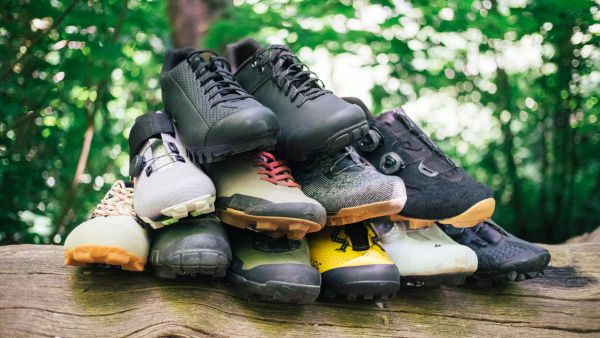
Gravel shoes are a popular choice when it comes to off-road cycling footwear. The best gravel shoes are stylish, comfortable, and can, most importantly, deal with all the challenges and tests that come with off-road riding.
You can, of course, use MTB shoes for gravel riding; it's all of road riding after all, but gravel-specific shoes are generally a little more forgiving, lighter and relaxed than all-out aggressive mountain bike shoes.
The best gravel shoes, like the best road bike shoes, meet the needs of a variety of different riders. Whether you're looking for a stiff, aggressive race shoe, a commuter model or something a little more comfortable for more relaxed all-around gravel riding.
We have tested all the best gravel shoes on the market, and have come up with straight-to-the-point, easy-to-navigate buying advice to help you find the right pair.
Our top pick is the Specialized S-Works Recon shoe, a top-end race shoe that's one of the lightest gravel shoes on the market. Its design has also been informed by the Retül bike fit system.
It's meant some uncomfortable rides at times during testing, but also some truly sublime experiences. I've learned a fair bit about what works and what doesn't, not just for specific models but in general, so as well as specific product recommendations, I'll try and share what I've picked up in general terms along the way too.
Head to the bottom of the page for buying advice and our FAQ section.
Quick list
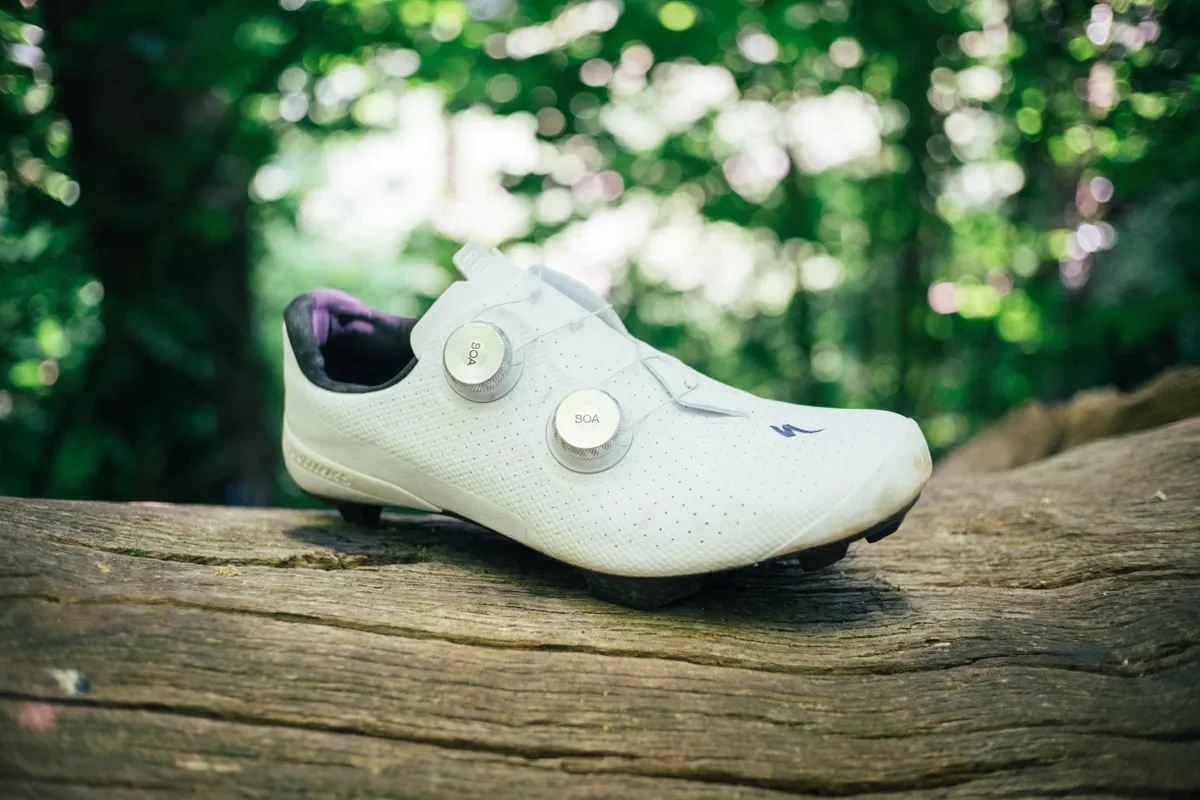
An unapologetically racy gravel shoe, the S-Works Recon is one of the most expensive on the list. Extremely lightweight thanks to a light carbon sole, the fit of these shoes is excellent, with an especially well-thought-out heel cup that keeps your foot positioned perfectly. The S-Works Recon are a favourite for those who want a stiff, close-fitting, premium model for racing, or just for riding hard in comfort.

The Northwave Hammer Plus is our best value shoe. This durable, comfortable and stylish shoe offers fantastic value for money. For all-around gravel riding and walking, it's one of the most comfortable shoes I have used. It's available in three colours and a wide range of sizes, so it should suit most. For everything from more intense efforts to social gravel spins, playing in the woods and walking off the bike at the bar or cafe, these shoes will have you covered.

Bikepacking does, from time to time, tend to involve a bit of walking. With this in mind, the Specialized Recon ADV has a thinner carbon sole in front of the cleat plate, making the front more flexible for walking. It sounds like a gimmick, but it really does work, especially on loose terrain where stiff soles often make you feel like you're wearing crampons. The lace closure ensures day-long comfort while riding, too, and they are constructed very well, so they should stand up to the additional abuse that bikepacking throws up.
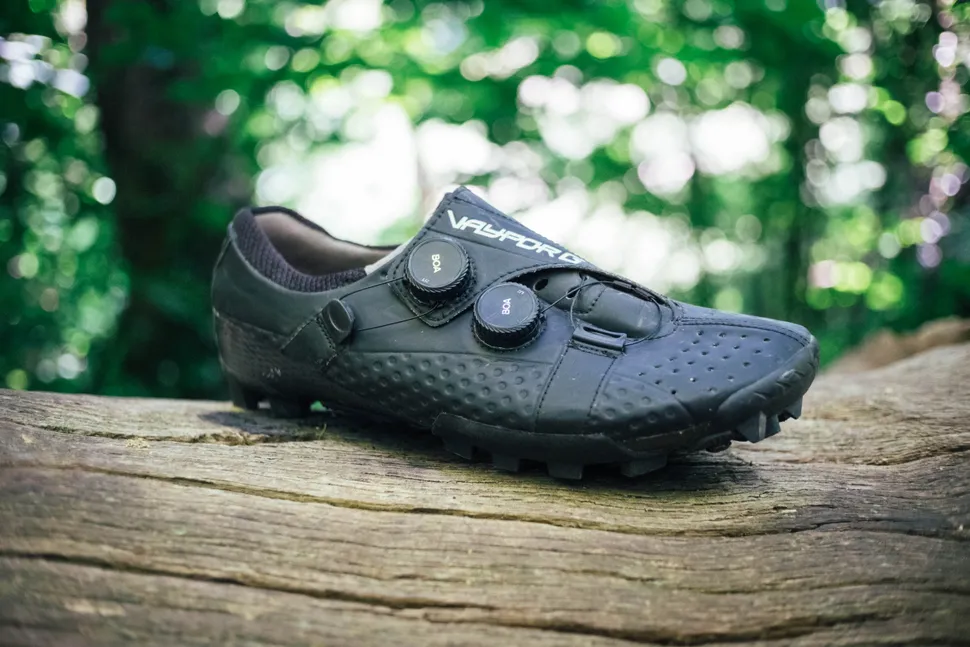
Wide fit shoes are great, but if you want a perfect fit, then Bont's Vaypor G gravel shoes offer up a sole that is heat mouldable along its entire length. They are available in a wide variety of widths, have a roomy toe box, and to mould them to your feet, you just whack them in the oven for a bit, and the resin softens. If you don't get it perfect the first time, you can repeat the process indefinitely, too.
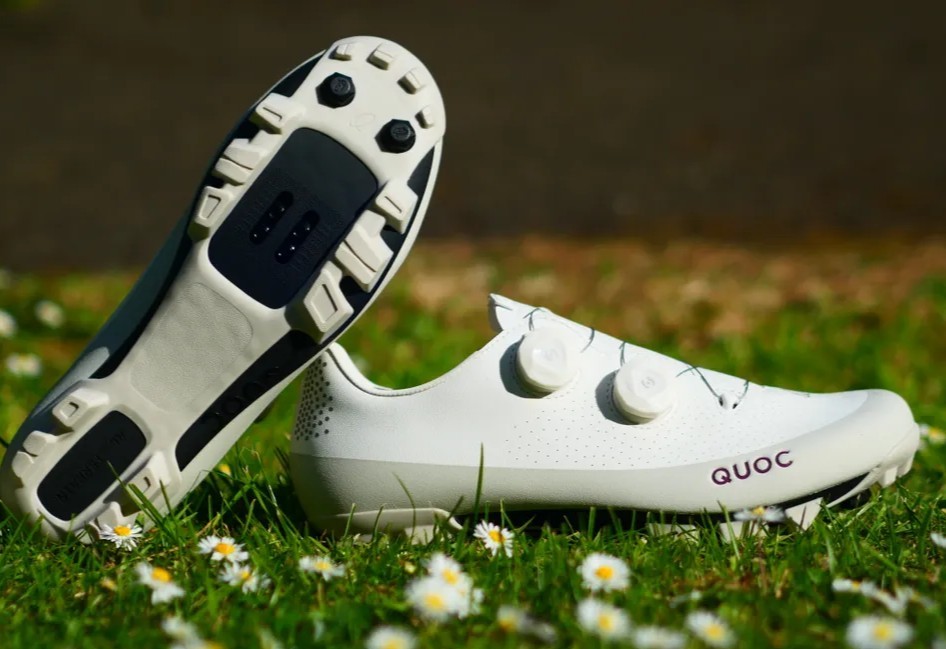
The Quoc Gran Tourer XC is a stylish and really versatile shoe that's equally at home on a multi-day bikepacking adventure as it is tackling a high-intensity race. Doing lots of things well and not straying too far in one direction makes them highly capable. We have also found them to be plenty durable on some epic rides in the wilderness. And they are pretty easy on the eye as well, always important!
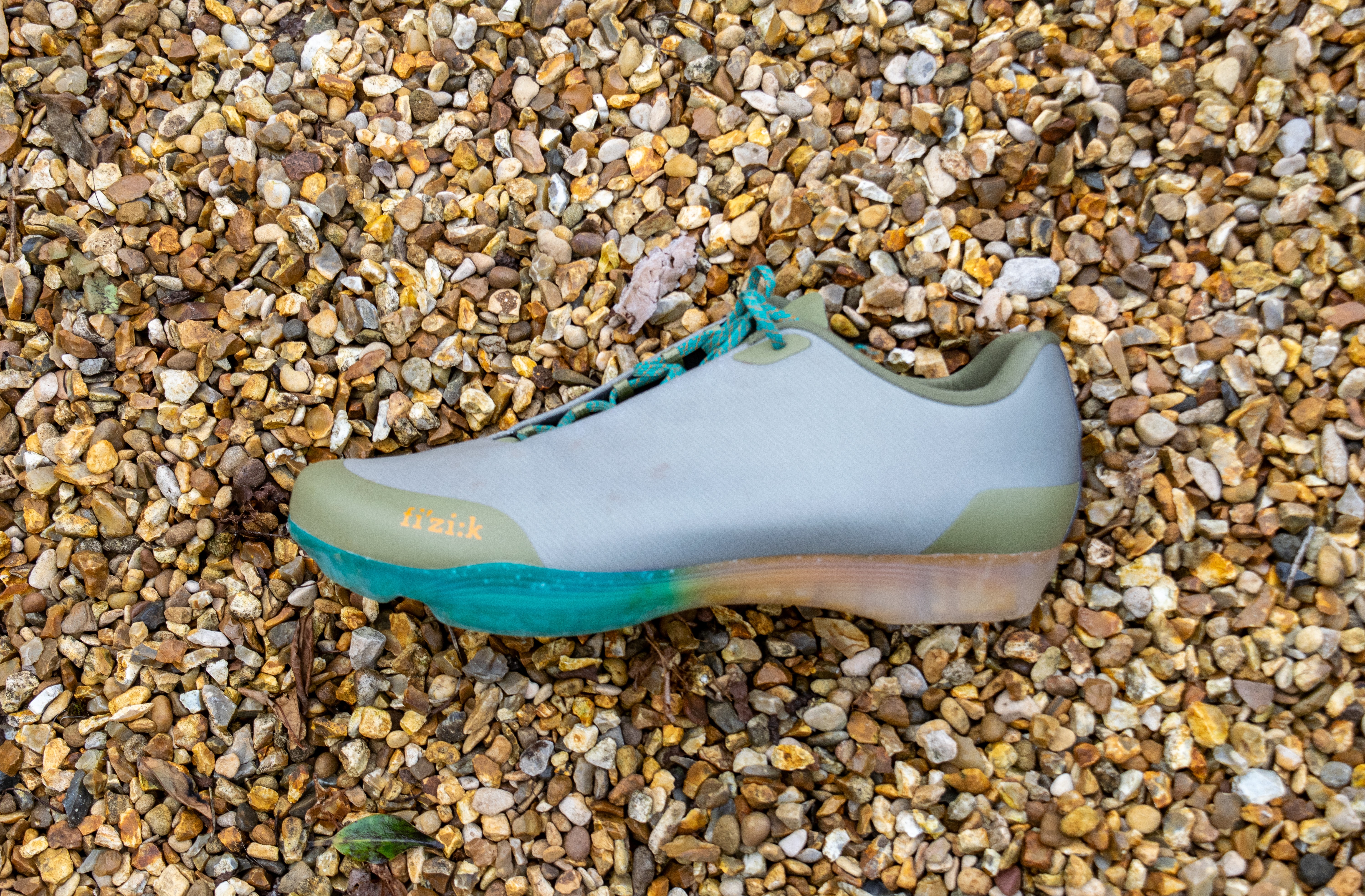
The Tempo Beat shoes from Fizik are a versatile, lace-up all-rounder that are perfect for commuting thanks to their durable design, comfortable sole that's easy to walk in, and round toe box that makes them look like regular shoes or trainers. They are available in green and a standard black version, which are the best two options for commuting and maybe even wearing at work.
Last updated on 8th September 2025
We regularly check our guides to make sure that we're bringing you the best products and adding new ones when these become available. We also review many new models and add them to our guides if they hit the mark in our tests. In this update, we removed a product that had been discontinued, and added new models with full comprehensive reviews. We also added a new shoe entry for 'most versatile' to offer another option for riders looking for a shoe that will cater to a broad range of riding.
The best gravel shoes you can buy today
You can trust Cyclingnews
Best overall
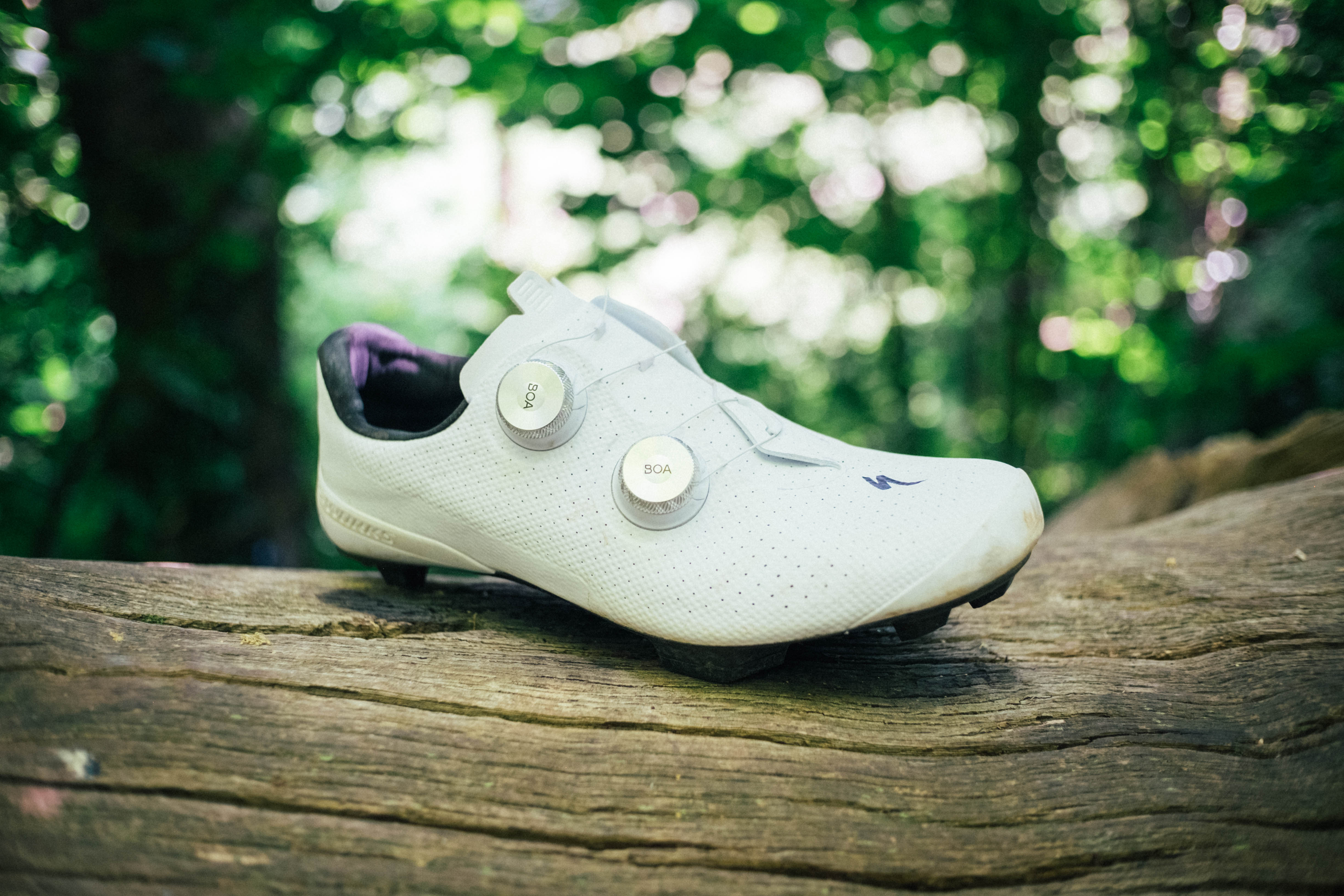
Specifications
Reasons to buy
Reasons to avoid
✅ You want a gravel race shoe: The S-Works Recons are stiff, light and designed for racing at the top level.
✅ You want a premium package: The Recons have real presence, thanks to their sculpted carbon fibre sole, and high-end construction.
❌ You're on a budget: The Recons are the most expensive shoes here.
❌ You walk a lot in your gravel shoes: The stiff soles make walking any distance awkward and not the most comfortable.
The Specialized S-Works Recon are an out-and-out, unapologetically racy gravel shoe. If you want a pair, the main drawback is going to be the price, so let's be upfront: These are the most expensive shoes of the bunch, a full £60 more than the next most expensive, the Bont Vaypor G. What do you get for that high retail price, then?
The fit is truly sublime. The heel cup is tenacious, the forefoot wider than previous generations, and the dual Boa closure means you get a shoe that feels more of an extension of your body than any other I've tried. Heel cups on Specialized shoes, especially top-end options, are always good, but also made of very stiff material that doesn't always play nicely with ankles. Here, the dropped outer ankle area keeps things comfortable when you're throwing the bike from side to side, or over rough ground.
They're also the lightest pair of shoes on test, thanks to a light carbon sole but primarily eschewing any real interior padding and being constructed from a rather stiff (and fortunately durable feeling), outer, with just a ridge of firm foam around the rim of the ankle to hold things in place. Don't mistake this for a lack of comfort, though.
These are a race shoe though, essentially a gravel copy of the S-Works Torch, and that distinction is more important off-road than it would be on the tarmac; I wouldn't want to walk off-road for extended periods in these any more than I'd want to walk for ages in road cleats. The outsole is essentially there to allow you to walk to and from your bike. If you want a race-facing shoe that you can actually walk in go for the Vento Ferox carbon if you've got narrow feet.
For more details on why these are our favourite gravel shoes, check out our in-depth Specialized S-Works Recon gravel shoe review.
Best value

Specifications
Reasons to buy
Reasons to avoid
✅ You're looking for the best value: This is a great gravel all-rounder for the price.
✅ You want a shoe that is comfortable to walk in: The Hammer Plus sole has built-in flex that's fantastic for walking too.
❌ You want really light shoes: The Hammer Plus aren't the lightest models out there.
❌ Your feet run hot: There's not the ventilation on offer for warm days that other shoes provide.
The Northwave Hammer Plus shoes are the ones to go for if you want the best value gravel shoe out there.
Italian brand Northwave has a huge range, and the Hammer Plus pack a real punch for the price. You can find them for some very competitive prices online.
They are some of the most comfortable gravel shoes I have used, and are excellent for walking around in, perfect for the cafe or a pub stop. My top tip, for an even more enjoyable walking experience, remove the two metal toe studs in the front of the foot to eliminate any harsh metal-on-rock feel underfoot.
The shoes are durable and have even survived a good scrape from a barbed wire fence.
Foot retention from the single closure dial is good, but I find the velcro strap a little redundant.
If you want some good quality gravel shoes to do a bit of everything in, these shoes are a great bet. To find out more, check out our Northwave Hammer Plus shoes review.
Best for bikepacking
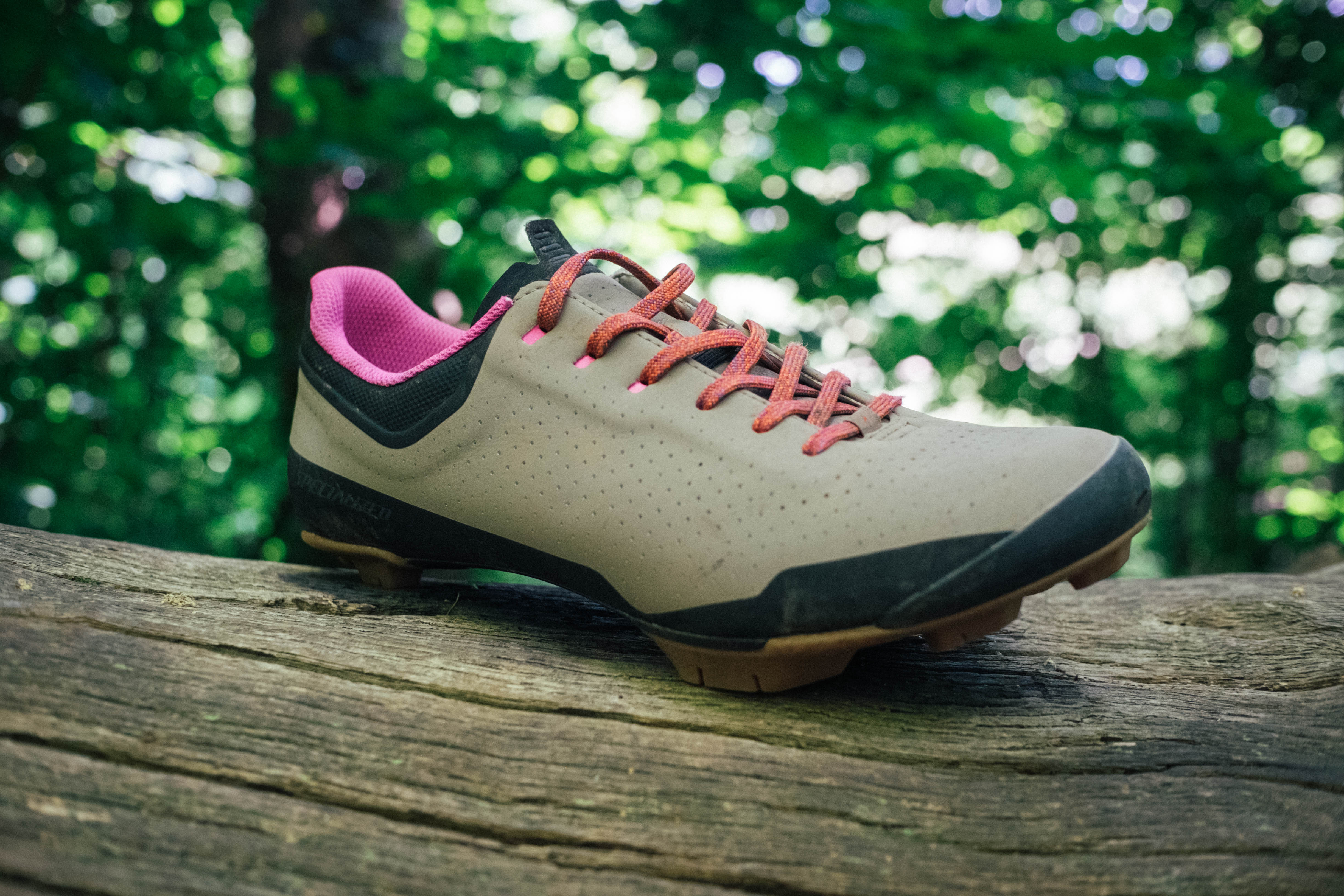
3. Specialized Recon ADV
Specifications
Reasons to buy
Reasons to avoid
✅ You walk in your gravel shoes: The sole plate has plenty of flex ahead of the cleats, making hike-a-bike easier.
✅ You like the adjustability of laces: The laces make it easy to fine-tune the fit for foot comfort.
❌ You frequently ride in the wet: The venting can quickly make for damp feet.
❌ You want extra grip: The Recon ADV's sole isn't as aggressive as some and can slip around when walking in muddy conditions.
Nominally, the Recon ADV is Specialized's 'adventure shoe', sadly another victim of the great gravel vowel shortage. While the outsole isn't a huge amount more chunky than the S-Works Recon, the carbon sole itself is more flexible in front of the cleat plate, making them a great deal easier to walk in, especially over rough ground.
While they're never going to compete with an actual walking boot for off-road hiking, for the sort of hike-a-bike that goes on while bikepacking it's just enough to make them decent without sacrificing shoe stiffness, as the sole under and rear of the cleat plate is just as stiff as ever.
It may just be because the Recons are newer, but the Recon ADV are a more attractive shoe, though the wider spacing of the side panels across the upper foot does have the effect of making your foot look a little more chunky.
Wide feet
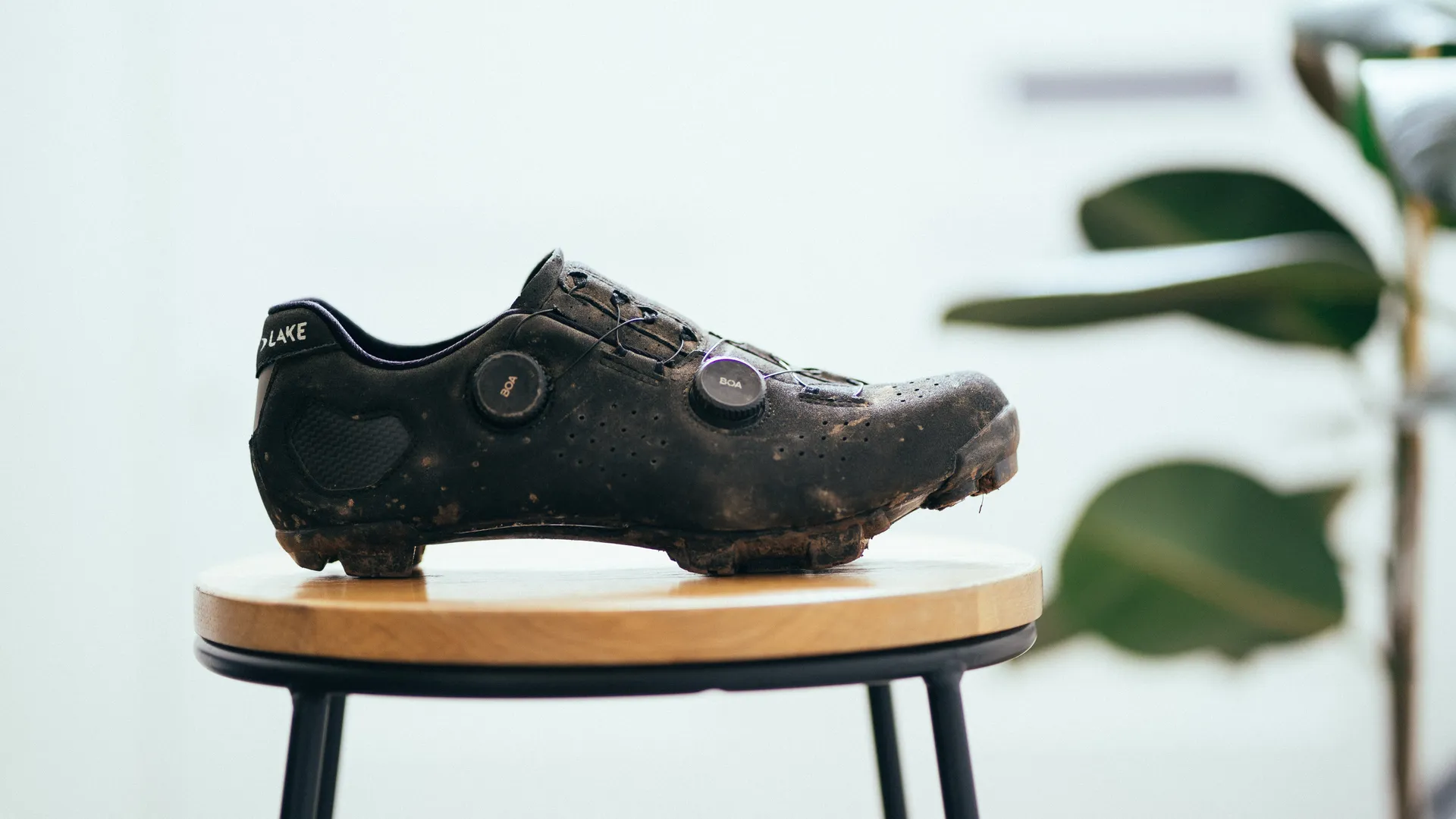
Specifications
Reasons to buy
Reasons to avoid
✅ You have a wide foot: Lake produces some of the widest shoes around with bigger toe boxes, which will suit some riders' feet.
✅ You are looking for durability: These are high-quality shoes that will last you for years. They stood up to all sorts of abuse in our testing.
❌ You need a light shoe: The MX333s are on the heavy side, thanks to their sturdy, quality construction, which means they aren't the lightest.
❌ You like to run your cleats quite far back: We found you can't get the cleats on the MX333's into a really rearward position.
The Lake MX333 are a supremely good pair of gravel shoes for the wide-footed generalist. They aren’t a svelte race slipper like the S-Works Recon, but they have stood up to a year of constant abuse without skipping a beat, all while being extremely comfortable.
The uppers are constructed from an extremely hard-wearing leather that has the look of sandpaper but is a lot softer to the touch. They won’t scuff, and I haven’t needed to give them any kind of treatment or special care despite covering them in mud through an entire winter without a clean and with no cracking, even after I had to literally chip mud off them before photography.
The carbon midsole is well protected by a heavy-duty outsole that, combined with a stiffness that isn’t overkill, makes for a pair that is more than decent for hike-a-bike, and the retention is certainly good enough for general riding, especially over the midfoot.
They are heavy, so not the one for weight weenies, and I needed to slam the cleats all the way back to get my preferred setup, but in all other respects, they have been faultless. Yes, the RRP is high, but especially if you find normal gravel shoes too narrow, then you’ll be glad of the added longevity you’ll get here.
Read more in our Lake MX333 cycling shoe review.
Custom fit
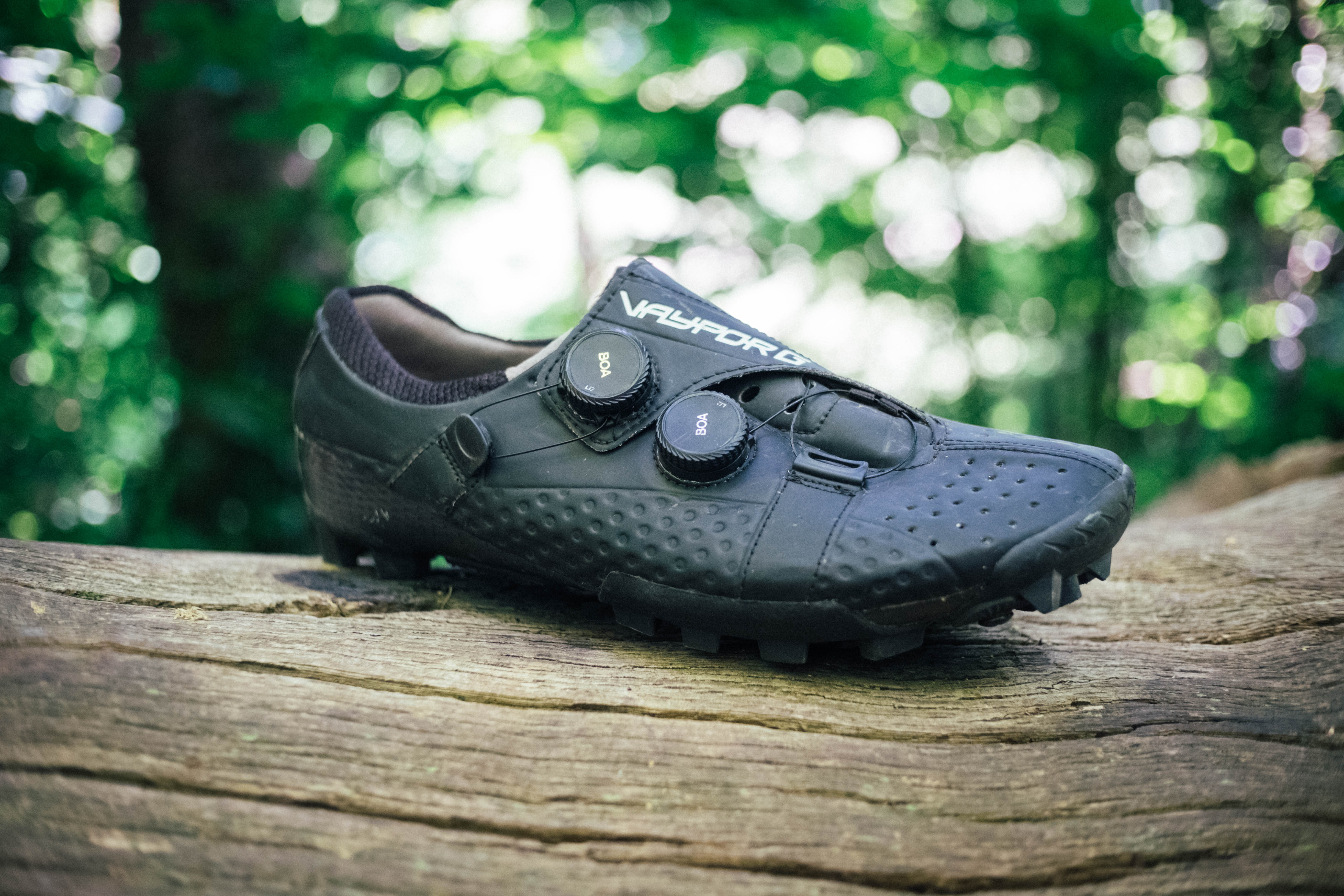
Specifications
Reasons to buy
Reasons to avoid
✅ You want plenty of width options: With four widths on offer, you should be able to find one that fits.
✅ You have odd-shaped feet: The Bont shoes can be heat-moulded to fit better.
❌ You want to walk comfortably: The bathtub sole makes for a very stiff shoe, so the Bonts are best if you don't walk much.
❌ You don't race: These are really race-only shoes.
Carbon-soled cycling shoes, whether gravel, road or MTB, are usually constructed around a flat carbon leaf sole. Bont, on the other hand, uses a 'bathtub' option, whereby the sole extends up the sides to encase the foot entirely in a carbon hull. This has the effect of making a shoe that is mind-bogglingly stiff; think about how a steel sheet is always going to be more floppy than a steel I-beam. They are so stiff I honestly cannot fathom walking in them, stiffer than any other shoe I have used by a noticeable margin. The experience is similar to wearing mountaineering boots with fully rigid soles designed to accept crampons.
Given the bathtub construction, the heat moulding process is paramount to make sure you avoid any pressure points. Twenty minutes in the oven at 70 degrees is enough to render the soles pliable, enough for a few millimetres of adjustment in any case. Bont does offer four different width options, and choosing the correct one is key because, try as you might with the butt end of a screwdriver, if your feet are too wide for the bathtub, there is nowhere for them to go. No soft material, just hard, immovable carbon fibre.
Sadly, I was just a hair too wide for the regular width, so I didn't have the most comfortable experience. But I did tune the fit enough to learn that if you want a shoe that gives you the feeling of total power transfer then it's hard to find anything that touches the Vaypor G. Given the stiffness they are rather unforgiving over particularly rough ground, but as a race shoe they'd rival the S-Works option and even beat it I'd say if you can get the fit spot on.
The closure system makes for a comfy upper, even if the sole is hard going, with a wide flap meaning no pressure points occur even when cranked up for an all-out effort. The toe box, too, is wide like that of the Lakes, so your little piggies can move around happily. As per the S-Works, these are a race shoe only and are not for walking, despite the appearance of the aggressively lugged outsole.
We've got a full Bont Vaypor G review if you need a bit more info.
Best for commuting

Specifications
Reasons to buy
Reasons to avoid
✅ You want a comfortable shoe to ride to work in: The Tempo Beats are comfortable and have a trainer-like feel. The soft sole is nice to ride and walk in.
✅ You want a shoe that looks 'normal': With their laces and simple sole, you could mistake these shoes for trainers, especially in black.
❌ You want to run road cleats: As gravel shoes, the Tempo Beats have a two-bolt cleat drilling for a recessed, SPD-style cleat.
❌ You don't want laces: Laces take a bit more time to do up than a Boa or Velcro.
Fizik released the Tempo Beat about a year ago and calls it a 'versatile, casual road cycling shoe' for riders on and off road. It's a lace-up, more relaxed shoe with a chunky, moulded sole that's perfect for a range of riding, walking and commuting.
The truth is, you can commute in these shoes, but also wear them for road or gravel riding too; that's the beauty of it. They are designed to be strong all-rounders.
The shoes come in three colours, including a sensible black version, which might be perfect for riding to work in; they just look like lace-up trainers or shoes.
The recessed, two-bolt cleats drilling means you can walk easily around in them, and the tough rubber feels soft underfoot. The shoes also received a wider toe box from Fizik to promote comfort and give toes a bit more wiggle room.
I've tested these shoes on and off road, and have spent a good amount of time walking around in them at cafe stops and at bike launch events. They are an excellent, casual, comfortable all-rounder.
They look good with jeans, trousers or shorts, and would be an ideal option for riding to work in and even wearing at work, depending on your job, plus they aren't super expensive, so you can keep some extra cash back for bike upgrades.
For more details, head over to our Fizik Tempo Beat shoe review.
Best for versatility
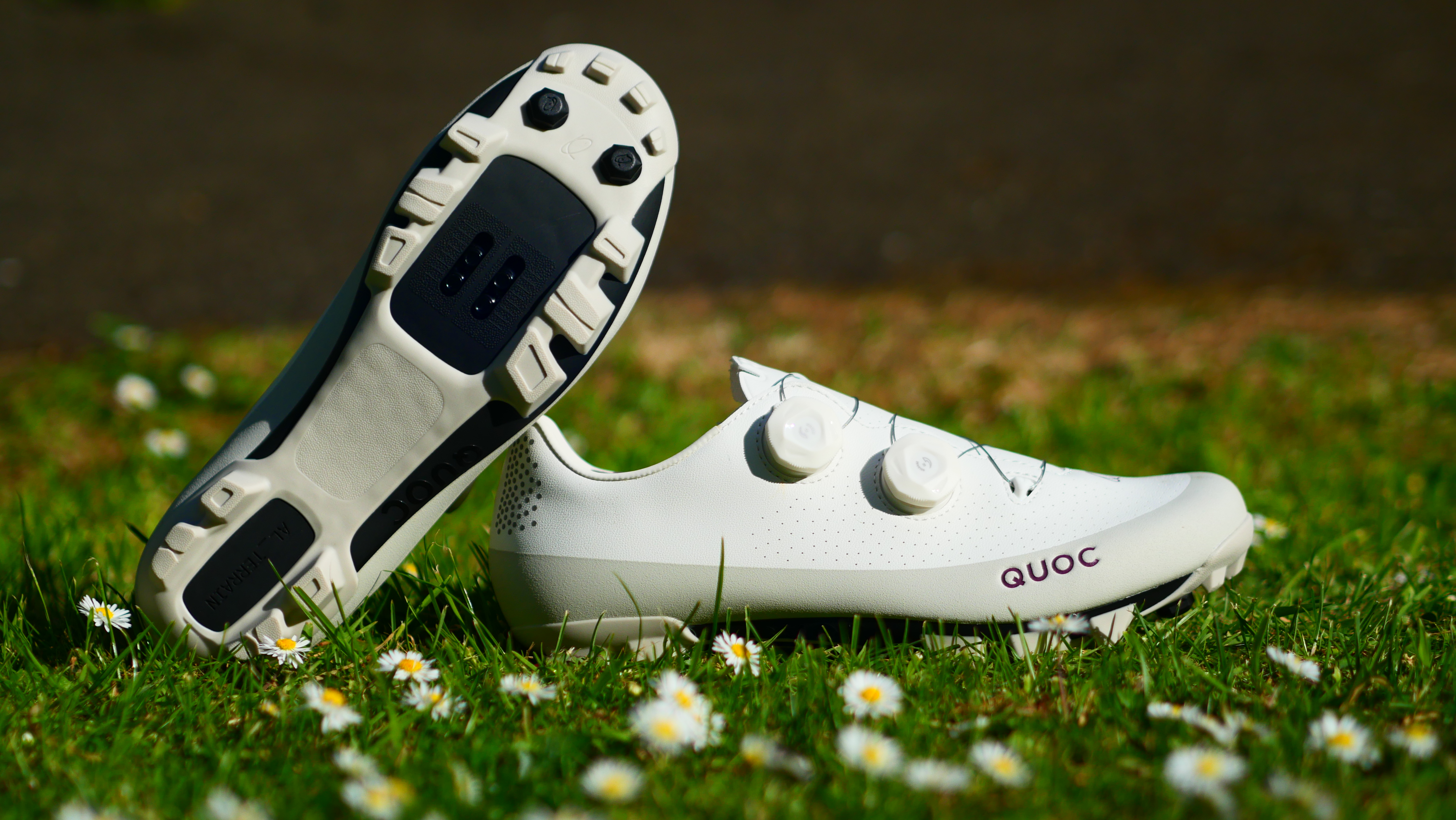
7. Quoc Gran Tourer XC
Specifications
Reasons to buy
Reasons to avoid
✅ You want versatility: The Gran Tourer XC works well for gravel racing, XC, and bikepacking, making it a true all-rounder.
✅ You want durability: The tough upper and full-coverage TPU sole mean the Gran Tourer XC handle long rides and tough hike-a-bike sections with minimum wear.
❌ You want grip when walking on wet surfaces: The hard-wearing tread can feel slippery on wet rocks.
❌ You want closure that can be easily fine-tuned: The dials don’t offer the same micro-adjustability as higher-end BOA systems.
Quoc’s Gran Tourer XC is an all-purpose off-road shoe that’s equally at home when gravel and XC racing as it is taking on bikepacking adventures. If you’re looking for a versatile shoe, then these are a great option. I required a little break-in period, but after a few short rides, the uppers were very comfortable and as a result, these are the shoes I have been reaching for when I have a big adventure day on the bike planned. The sole is performance-oriented, so it’s stiff enough to deliver efficient power transfer, although the large lugs mean these shoes are still very walkable off-road.
They aren’t the lightest shoes around, but the few extra grams are invested in durability. I have used these for several big rides which demanded some serious hike-a-biking and so far they have shrugged off miles of trudging along paths littered with jaggy rocks. It's worth noting that the flip side of the hard-wearing tread is that they can be a bit precarious on wet rocks, although they still outperform most other gravel shoes in this department and are only bettered by Rapha’s chunky treaded Explore, which uses a grippier rubber outsole.
Personally, I would like to see BOA dials with both tightening and loosening micro adjustments on the Gran Tourer XC’s. That said, the Quoc's own branded dials work well. They click tighter, giving a nice amount of adjustment fine-tuning, and when spun in reverse, they release the tension, which makes taking them off very quick and easy.
I’ve been riding the Gran Tourer XC version that’s equipped with two dials, but there is also a more affordable single dial version and classic lace-up, which share the same sole and uppers.
Also tested
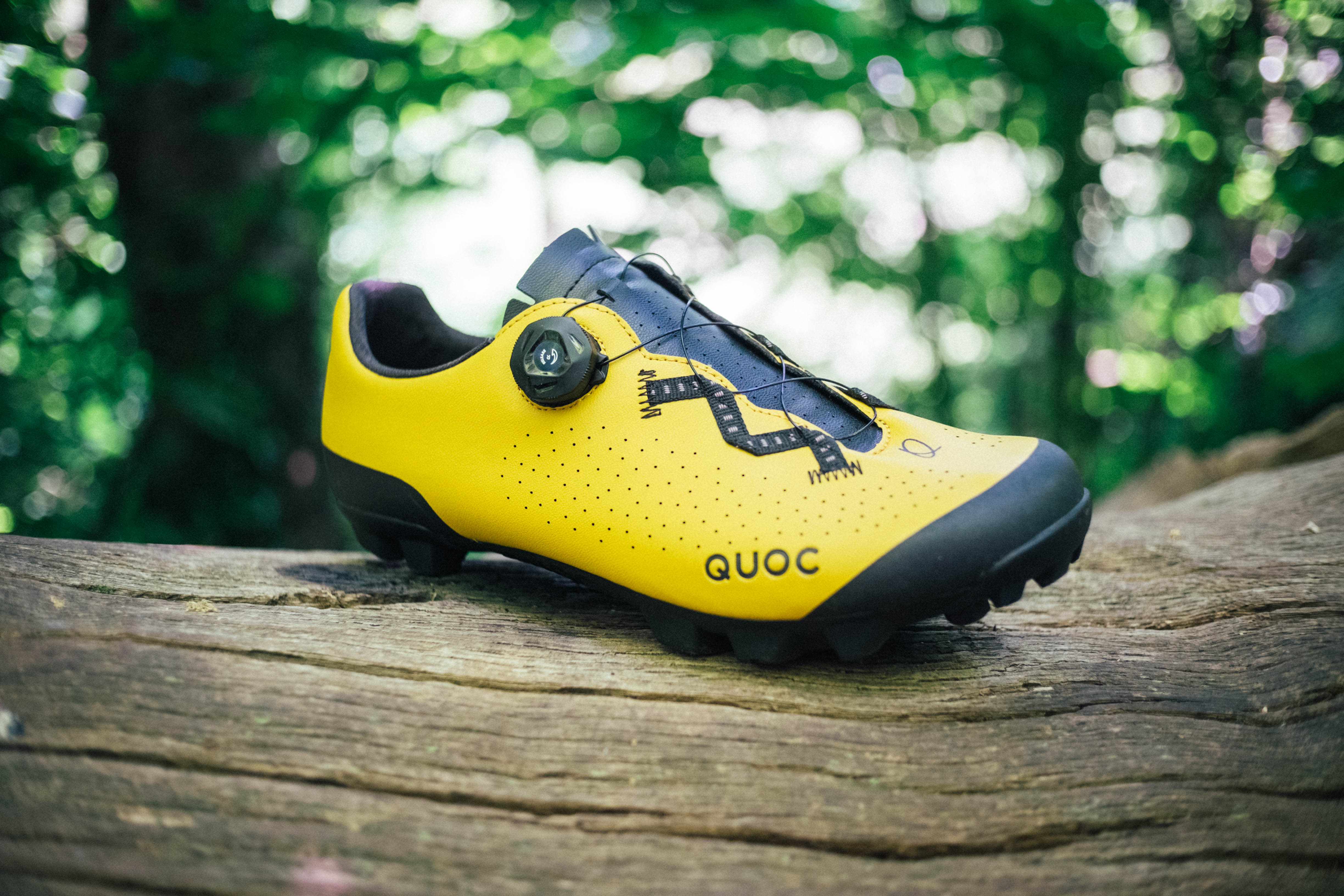
8. Quoc Escape
Specifications
Reasons to buy
Reasons to avoid
✅ You want an affordable dial closed shoe: The Quocs offer good value for a dial closed shoe.
✅ You like yellow: I loved the looks and the deep yellow colour, although it's hard to keep clean.
❌ You have wider feet: There's only one width on offer and it's not as wide as the Lakes.
❌ You want more insulation for winter use: There's not as much padding as in the Giro Privateers, so your feet will be colder.
In all honesty, I was torn for a time as to whether to award these the overall. If you're not after laces, though and want a great pair of gravel shoes with a dial closure, then the Escapes are hard to beat, especially as a first option.
The single dial, a non-BOA option, is the same as the two found on the more premium Gran Tourer CX model. As per the road model of the same shoe I've also had on test the closure is perhaps the best of any single-dial shoe I've tried. Often, one dial will mean the upper foot fits but the forefoot is a bit floppy, but that's not the case here. The dial itself doesn't feel as good as a BOA-branded one, even the lower-end dials, but it works nonetheless.
The fit is relatively narrow, but with a soft enough exterior to allow the foot to expand over the edge of the sole if they aren't optimal. Shoes at this price point don't come in multiple widths, sadly. They are noticeably less padded than some; less comfy over properly rough terrain and a little less insulated for winter use, but on the flipside, they feel a little more connected.
Heel retention was also excellent, though the heel lining annoyingly doesn't extend far enough around the entry to the shoe. This means there's a transition between padded and unpadded that sits just forward of the ankle and did provide a bit of irritation. Never painful, just noticeable when zoning out, but something that could easily be fixed by moving the transition forward of the tongue.
Aesthetics matter too, and these are a lovely-looking pair of shoes, especially in the lovely deep yellow. It doesn't affect performance, but it makes me want to use them more than many others.
I also tested the Sidi Dust; a single dial, composite soled option. It was more flexible and didn't close as well, with a dial that was more of a pain to use. The RRP is higher, and while you can pick up a pair on sale for a similar price to the Escape, the only reason to do so, in my opinion, would be if you have extremely narrow feet, or you just want to wear Sidis because of the brand name or aesthetics.
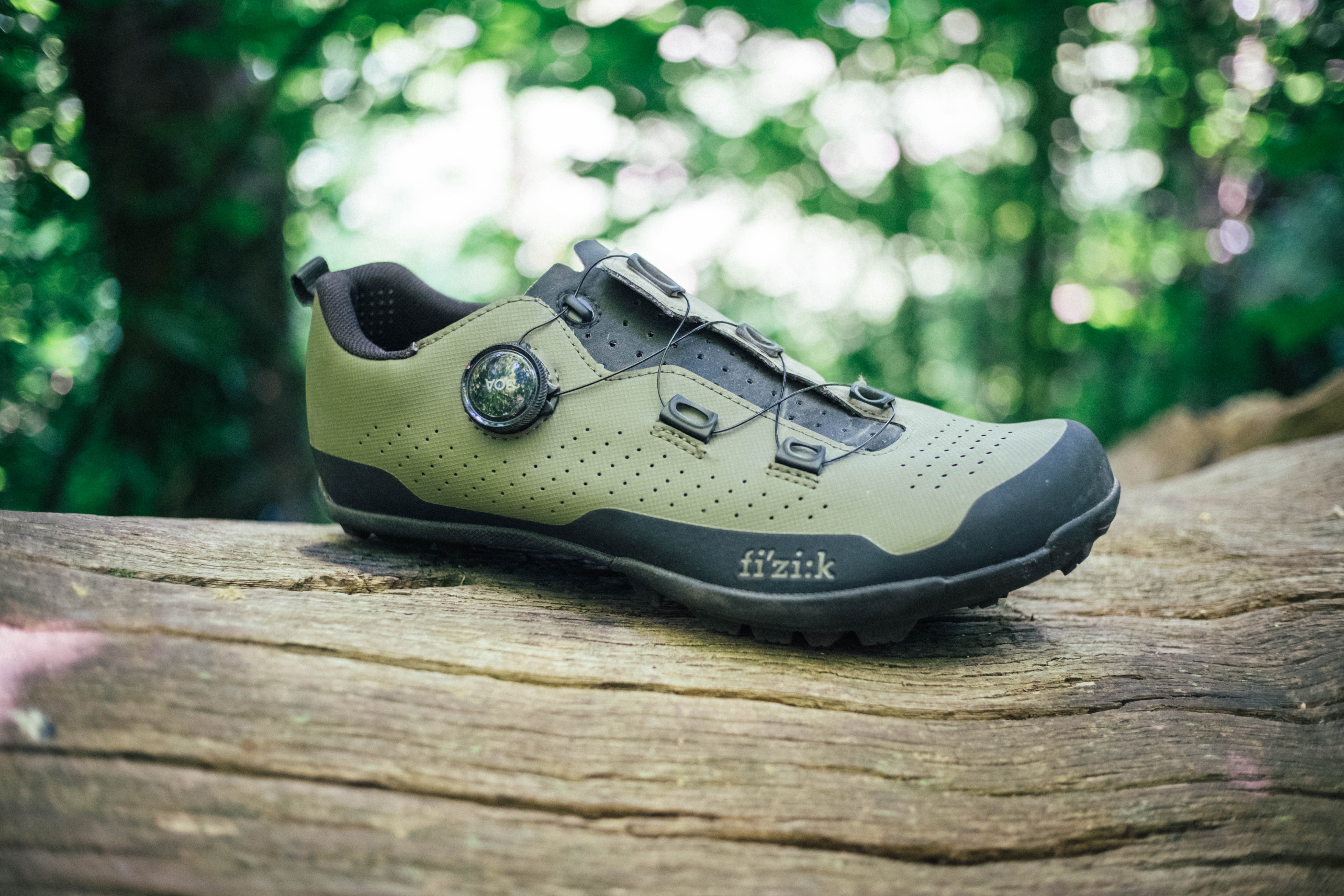
9. Fizik Terra Atlas
Specifications
Reasons to buy
Reasons to avoid
✅ You're looking for plenty of grip: Fizik's sole has deep cleats that cut into mud well.
✅ You want a sturdy shoe: The Terra Atlas feel robust and has added reinforcement on the sides of the uppers.
❌ Your feet are on the wide side: The Terra Atlas shoes are quite narrow.
❌ You want lower weight: These shoes are quite heavy and more akin to MTB shoes than road shoes.
Gravel shoes, on the whole, take their design language from road shoes. The Fizik Terra Atlas, to me, seems like it's come more from an MTB standpoint. It's bulkier than other Fizik options, and though it's wider for sure than the Vento Ferox Carbon (I can actually get my feet in these), it's still narrow. There's a clear focus on 'adventure riding', with a fully rubberised sole heel to toe, substantial cleats, and greater reinforcements around the lower part of the upper fabric too.
The single dial does an admirable job of keeping the foot retained across the whole length, on par with the Quoc Escape, but here at least there is a BOA-branded dial closure. It's still a lower-end model, so if you want to release the tension, you do have to pop it open and then start from scratch, but in my opinion, that's less of a drawback with single-dial shoes as at least you've only got the one dial to fiddle with.
Heel retention is decent, and while the little plastic dots are well-intentioned, I found them more of an irritant than any help to actually keeping my heel down. The same rings true for any heel texture; no grippy materials can replace a good fit unless your socks are actually glued to your foot too.
Despite not fitting me perfectly, they did feel like a very supportive gravel shoe. Sturdy, well-made, padded enough to feel like you're protected, but not enough to make them feel wallowy. Not a race shoe, definitely more attuned to those of you who feel MTB curious. To be honest, you could probably use these for MTB quite happily too, if you need a do-it-all option.
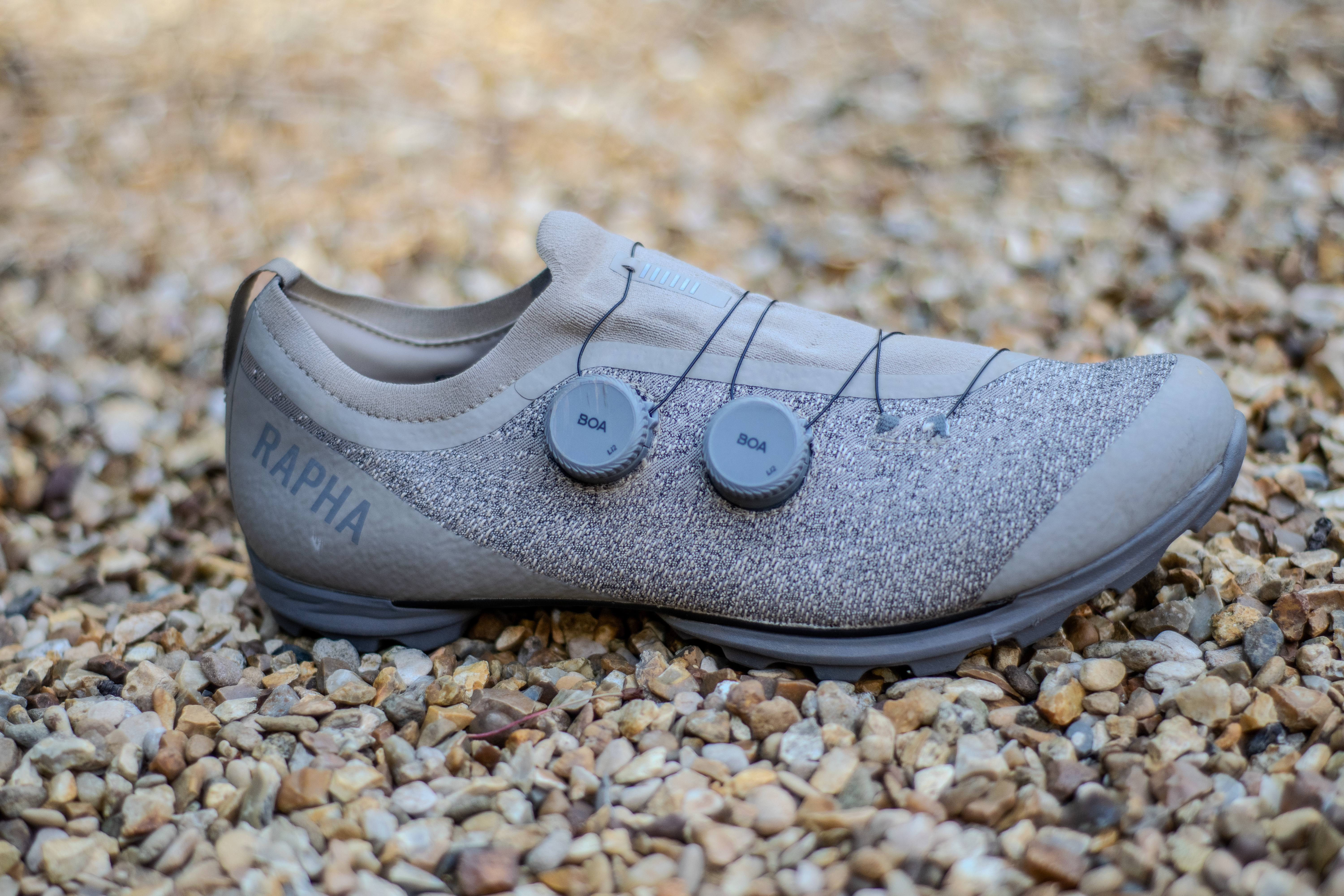
Specifications
Reasons to buy
Reasons to avoid
✅ You want a comfortable all-rounder: I've done relaxed gravel spins and raced in these shoes; they are good at everything.
✅ You value the best foot retention: I was impressed with how well the twin BOA dials held my feet in place, as well as their effective position.
❌ You want to spend a bit less: These are nice shoes, but they possibly carry a bit of a Rapha style tax.
❌ You have a wider foot: These shoes are of average width. If you need a wider shoe or have a wider foot, you may need to look elsewhere.
The Rapha Pro Team Powerweave shoe succeeded the Explore Powerweave shoes this year. The shoes are easier to clean now and have a new grippy Vibram / carbon fibre sole as well as a low, knitted ankle cuff.
A standout for me is the comfortable fit of these shoes and the way the soft Powerweave material, paired with the dual dials, closes around and holds your foot; it feels great.
I've tackled relaxed road and gravel spins to racing the Traka gravel event in these shoes, and they have done it all well, a premium all-rounder, and are flexible enough to walk comfortably in.
I experienced a little bit of debonding on my own test shoes' upper. And Rapha assured me it was a one-off for my pre-production test pair, but I mention it anyway.
These are also more expensive shoes than the model they replaced, and although they are very nice, comfortable shoes, you may be able to find something that works for you for less.
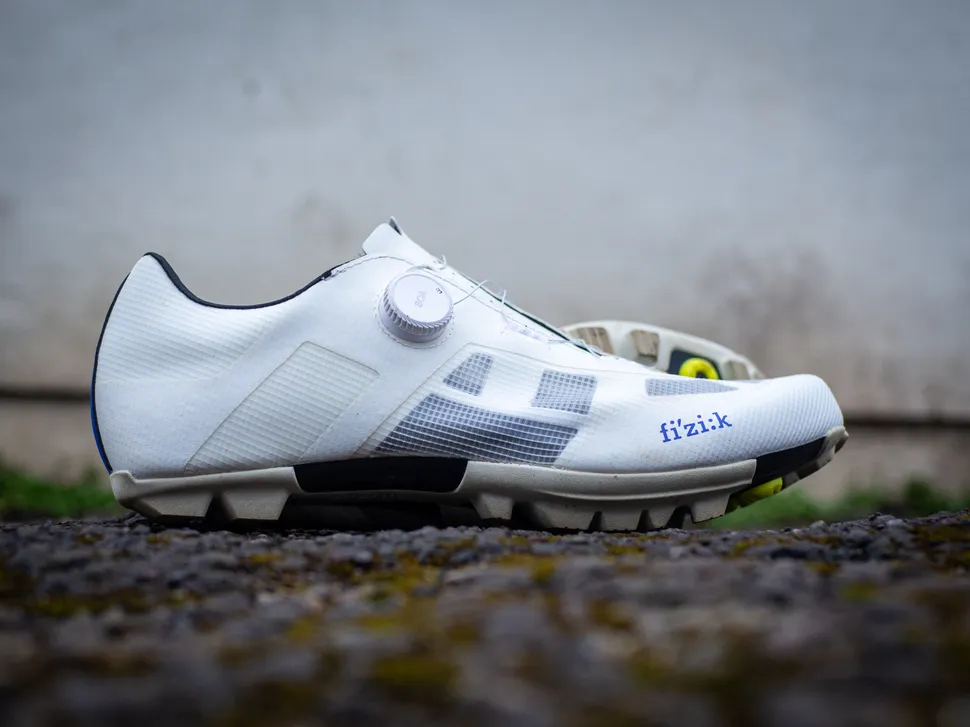
Specifications
Reasons to buy
Reasons to avoid
✅ You want ventilation on hot days: The ventilation on offer here is excellent, and we really noticed it on hotter days.
✅ You want stylish shoes: These are great-looking shoes; we love the white and blue version, but there are three other great-looking pairs as well.
❌ You don't tend to get on with metatarsal buttons: We found the protrusion on the shoe's insole to be a little bit intrusive.
❌ You want a really secure foothold: We found the hold of the Vento Proxy to be a little bit less secure than some shoes.
The Vento Proxy shoes replace the Vero Ferox carbon model in the guide. In the Vento Proxy, we have a better ventilated and more protected option, particularly at the front of the shoe that can be vulnerable to rock strikes, etc.
This is technically the second-tier model in the Fizik gravel range, and is priced accordingly at £229.99 / $249.99. It has a carbon fibre / nylon-infused sole.
Tech Editor Josh Croxton has trained, ridden and raced in these shoes and found them to be great all-rounders. Though they are possibly better suited to warm weather riding, thanks to their excellent ventilation.
The shoes are also available in four great-looking colours. Fizik is on point with its styling right now. If you want a slick, great-looking all-rounder that will help keep your feet cool, look this way.
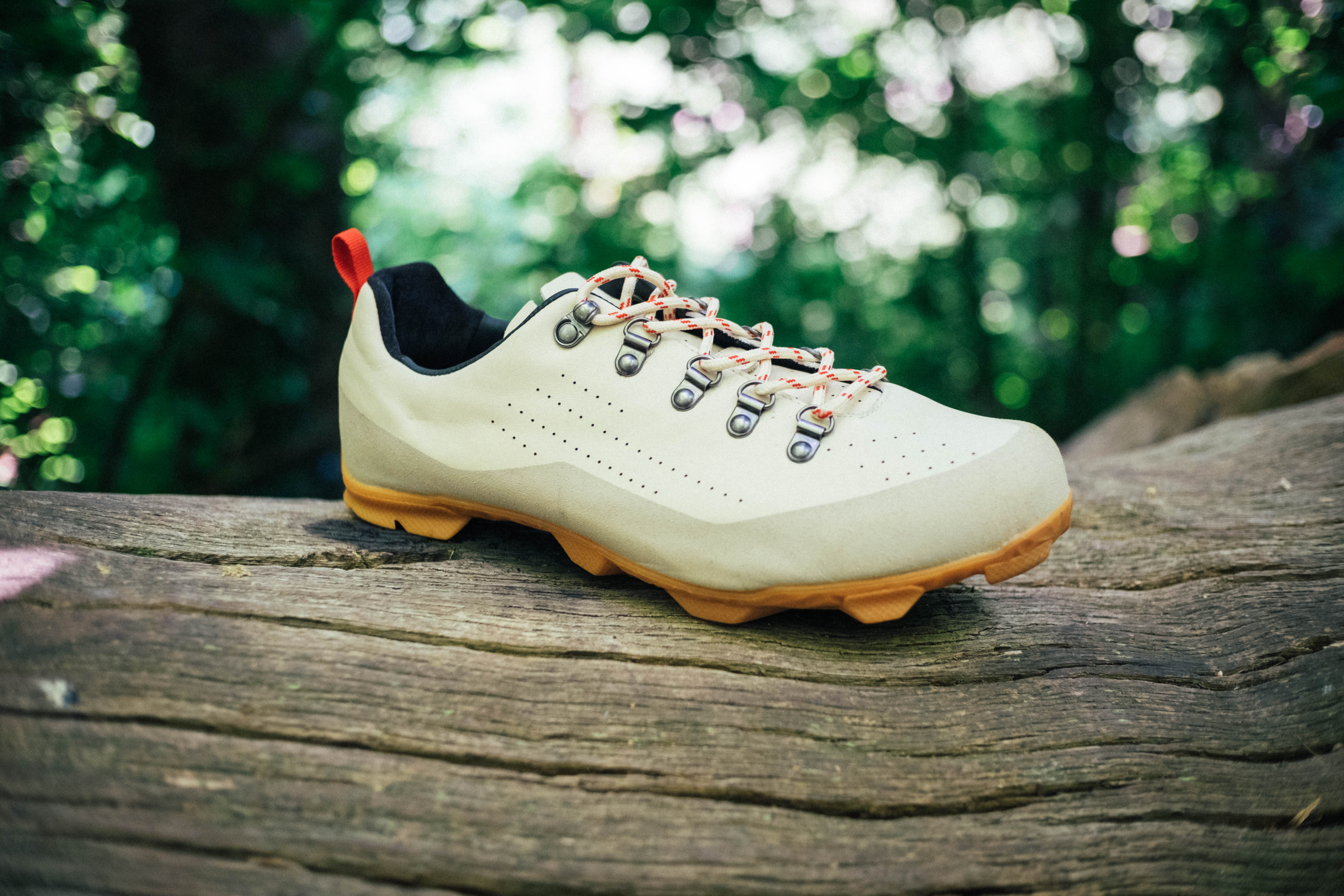
12. Café du Cycliste Outlands
Specifications
Reasons to buy
Reasons to avoid
✅ You want classy looks: These shoes look beautiful and are well-made.
✅ You like the quality build: The Caffs have a luxurious feel and have so far worn well.
❌ You want better foot retention: My heels slipped in these shoes and the laces were also prone to loosen.
❌ You want a lower weight: The traditional materials make for weighty shoes.
If you've been riding gravel for even a short term you'll probably have heard the phrase "The Spirit of Gravel". This nebulous beast means many things to almost as many people. To me it means "Wearing sexy gear while messing about in the sunshine", and no shoe better encapsulates that to me than the Café du Cycliste Outlands.
I'd have loved to be in the meeting where someone proposed styling a performance cycling shoe after a vintage set of hiking boots; I presume it occurred after a boozy lunch with lots of rich cheeses and dried meats.
These aren't the best gravel shoes for anything really. The heel retention isn't great, despite the best efforts of the cat's tongue fabric on the inside. The laces too sometimes slip when you're trying to tie them up and slip in the eyelets, so getting the perfect fit is hard, and making a shoe with leather, metal eyelets and a full gum rubber outsole makes them the heaviest 'proper' gravel shoe of the bunch.
I don't care though, because they're beautiful. They smell great too, for now, and are ageing well. They're an expensive affectation, but they make me feel a million dollars when I do wear them. For general riding, they're perfectly adequate from a performance standpoint, and I'm also a big proponent of the fact that looking good makes you feel better and ride better.
They are also extremely well-made and feel luxurious, more so than the more expensive shoes on the list. The full gum outsole is also second only to the Explore Powerweave in terms of ease of walking, only detracted from by the slight heel lift with each step.
These are a shoe to buy if I'm being totally honest, just because you want them, and that's fine. There's space for that alongside more pragmatic choices, but please still bear considerations, such as fit, in mind as I go into later in the FAQ's.
How to choose the best gravel shoes for you
As with any purchase, the best way to get what's perfect for you is to start by being honest about your use case. If you don't race, you don't need race shoes, for example. It's so easy to fall into the "ah but what if one day I..." trap, but I implore you to really define what you need now before you home in on what you may one day need down the line.
Once you're done with the function, the fit is the next key thing to consider (yes, more than closure, sole material or even aesthetics, I'm afraid). Footwear is a huge part of one of the main contact points with your bike, and getting the fit wrong can have knock-on implications up the biomechanical chain.
More than choosing the perfect gravel bike saddle or the best cargo bib shorts, footwear can play mischief with your tendons rather than your soft tissue. If you don't know how wide your feet are then do some research; I assumed I had the dainty narrow feet of a ballerina, but after getting a bike fit I found out I actually have troll feet, so you may be surprised.
Then you can think about closure and aesthetics. These are more down to personal preference and don't have any real drastic impacts so you can pick your poison as you please.
Can I wear mountain bike shoes for gravel riding?
Of course you can, but mountain bike shoes are generally more overbuilt and have soles suited to the demands of the chosen discipline. Cross-country, or XC, shoes will be the closest analogue to gravel shoes, and before gravel-specific footwear existed, this was the next best thing. However on the whole, you don't need toe spikes for gravel riding, and while many gravel shoes have ports to fit them, they're much more useful in cyclocross.
At the other end of the spectrum, just because you can clip into your gravel bike with a set of downhill shoes doesn't mean you should. You'll rub your cranks, your feet will overheat, and you'll probably get blisters.
Can I wear road shoes for gravel riding?
You can, but you shouldn't. At the very competitive end of gravel races it is something we see as they do offer a better pedalling platform thanks to the larger cleat, but this only really works though as the racers are unlikely to put a foot down over the course of the race, and also probably get free cleats. In wet and muddy races it's rarely seen at all, as road pedals are much more prone to clogging.
In short, if you're going to ride off-road regularly, then get some off-road shoes. I took my road bike on an excursion down a bridleway once and my Look Keo Blade pedals got so clogged that I blew the carbon spring out of one of them trying to get my cleat to clip in. Learn from my mistakes.
Do I need toe spikes for gravel riding?
No, not unless you really want them. Toe spikes are primarily added to shoes for cyclocross racing and CX MTB racing where the chances of having to run up a steep, muddy incline are much higher. The toe spikes dig in and stop you from failing to make any forward progress.
Gravel riding generally doesn't involve fast, crazy steep run-ups, but if you also race 'cross then having the option to fit them when necessary will be hugely beneficial.
My top tip is to make sure you remove them for general use too; throwing a leg over your top tube and accidentally scoring it with a sharp stud is a mistake you only make once.
Are laces better than dials?
There isn't a 'better', they're just different. Each has advantages and disadvantages. Laces are infinitely adjustable, superlight, and durable, but are fiddly (especially in the muck), and cannot be adjusted quickly on the fly. Dials, on the other hand, spearheaded by BOA, offer easy adjustment to the fit of your shoes while you're riding.
You'll notice a conspicuous absence of Velcro in this guide, save for the one Powerstrap seen on the Fizik Vento Carbon. Velcro has a finite service life at the best of times, and this is accelerated when you throw mud and dust into the mix, so if you can avoid it then steer clear, especially if it's the main closure system on the shoe.
Should gravel shoes be stiff?
This depends on what sort of gravel riding you're doing. For racing, then you do probably want a stiff shoe, as it's claimed to offer better power transfer. Given composite soles are also light, it doesn't necessarily offer a great weight saving though, and if you're going to walk around in your gravel shoes a lot then a carbon sole can actually be a downside as it makes the shoes uncomfortable and ungainly to clip-clop about in compared to the more flexible feel of a composite sole.
How should my gravel bike shoes fit?
We are conditioned in cycling to want everything to be skintight, but your feet need room to spread out to their full width under load to best transfer power, so don't go forcing yourself into a too-narrow shoe just because you want it to fit. You aren't the ugly step-sister; you are Cinderella and you deserve a gravel-specific glass slipper of your own.
Ideally, you want enough room for your forefoot to spread out, with a heel narrow enough to prevent it from lifting on the upstroke. In my experience, the former is more important than the latter, though if you have stiff shoes and are walking a lot then heel retention does become more important, as the heel wants to lift away from the shoe each stride if the sole doesn't flex.
In general, Italian shoes tend to be the most narrow, so that's Fizik from this list but also Sidi. Giro also comes up narrow, but the outer material is often softer, allowing more leeway in the fit.
If you do have wide feet, then some brands offer wide fits or are wider out of the box anyway. Bont shoes come in four widths, and Lake are both wide as standard and come in a few even wider options.
I usually wear a size 44, so from the "weight" stat box for each shoe you can also see whether I was true to size, or had to go up or down.
How we test
Primarily by riding in all of them, you'd be unsurprised to hear. I spend a lot of time riding on gravel anyway, but heading out with several shoes isn't unusual, to be able to try back-to-back options to see how they stack up. I also tend to get distracted and head down interesting trails, usually ending up with me walking back up again when I get to a dead end, so how they grip off the bike is also at the forefront of my mind.
As for walking about, I get about by bike in town and to the office, so as much as anything else, these shoes became my daily options for some time too.
Finally, given the UK climate, I've been truly #Blessed to have had my fair share of mud as well as beautiful fast dirt to see how they handle getting filthy and how they clean up afterwards.
The latest race content, interviews, features, reviews and expert buying guides, direct to your inbox!

Will joined the Cyclingnews team as a reviews writer in 2022, having previously written for Cyclist, BikeRadar and Advntr. He’s tried his hand at most cycling disciplines, from the standard mix of road, gravel, and mountain bike, to the more unusual like bike polo and tracklocross. He’s made his own bike frames, covered tech news from the biggest races on the planet, and published countless premium galleries thanks to his excellent photographic eye. Also, given he doesn’t ever ride indoors he’s become a real expert on foul-weather riding gear. His collection of bikes is a real smorgasbord, with everything from vintage-style steel tourers through to superlight flat bar hill climb machines.
- Tom WieckowskiTech writer
- Graham Cottingham